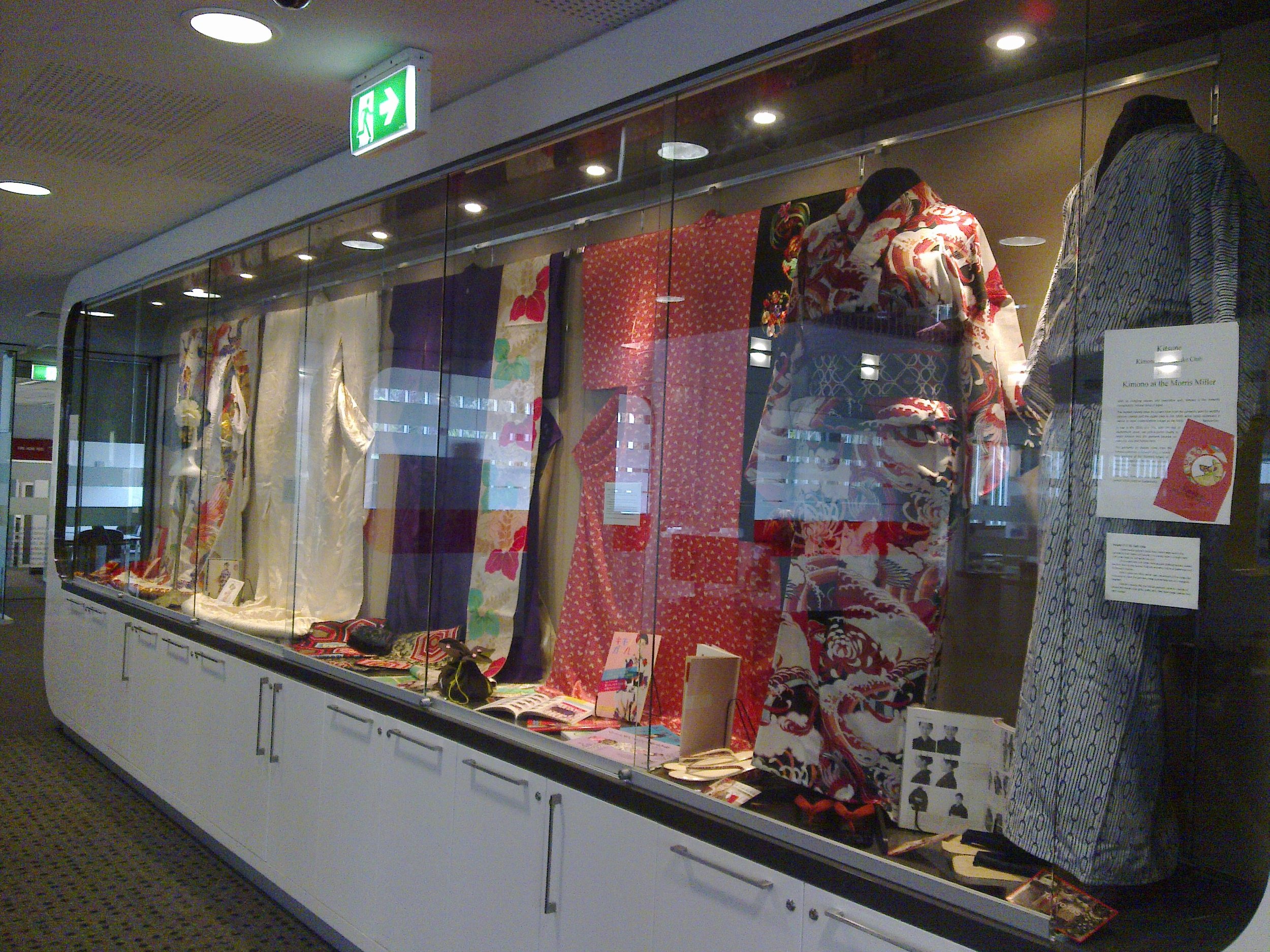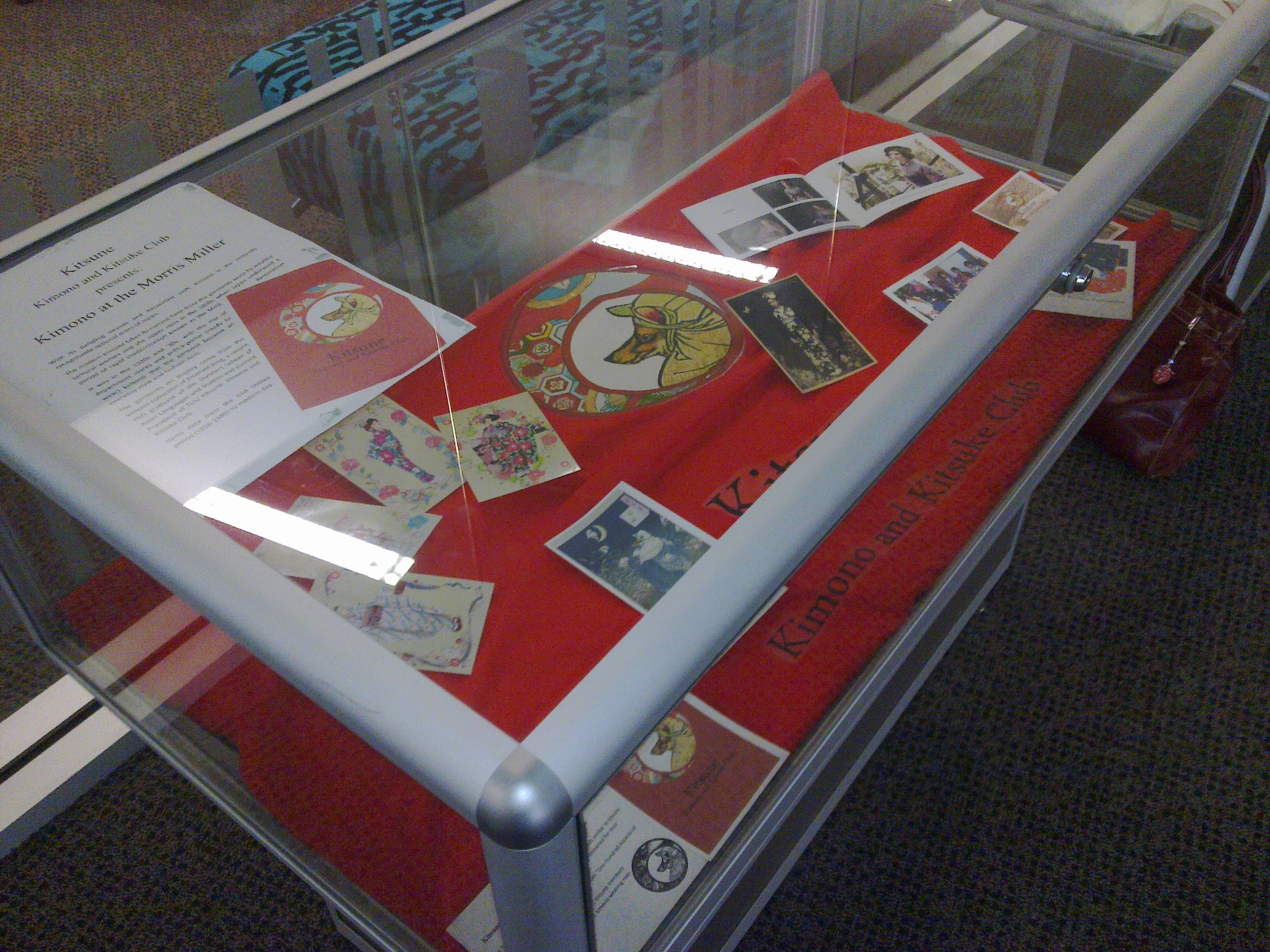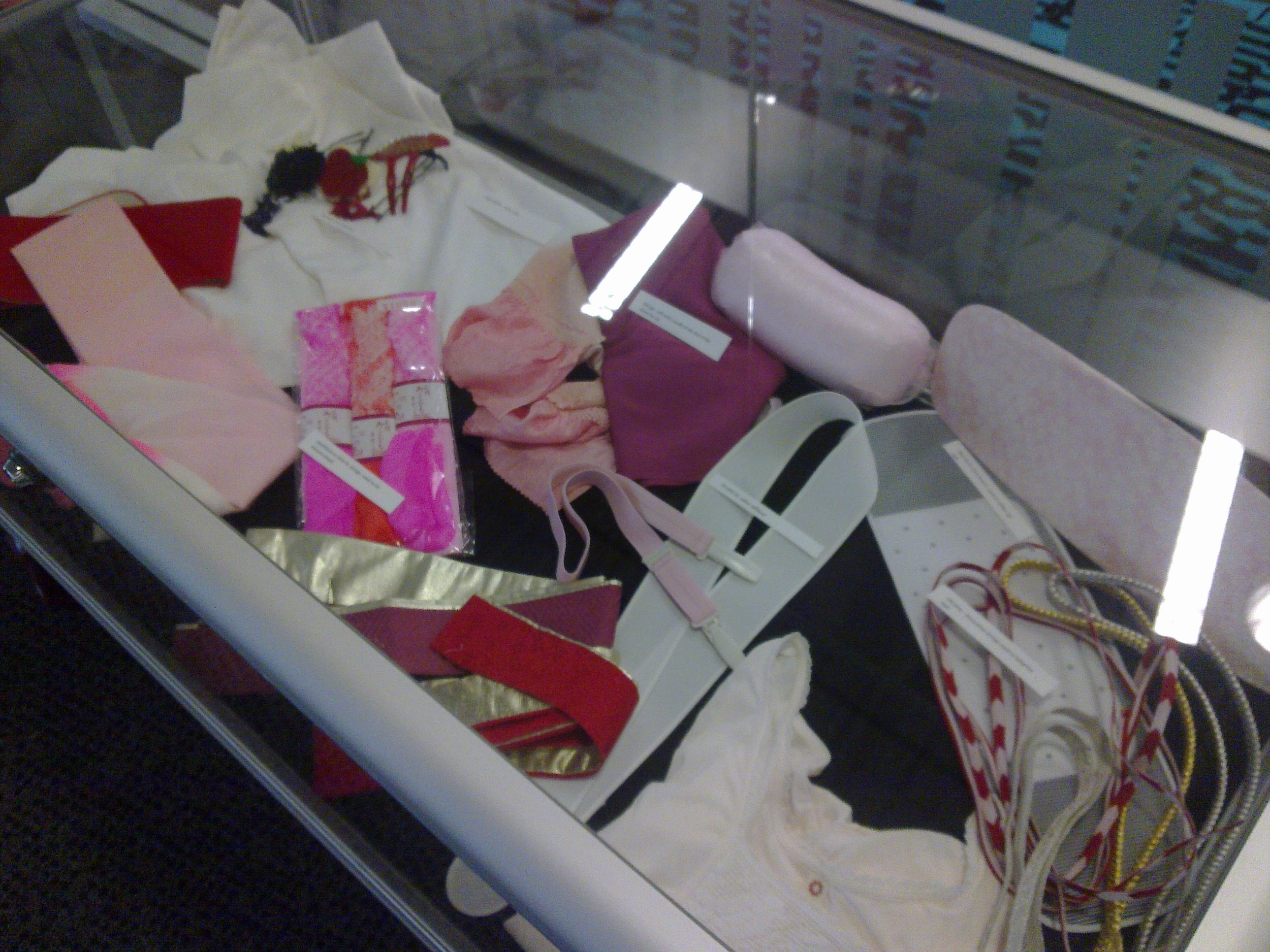
Kitsune Kimono and Kitsuke Club presents: Kimono at the Morris Miller (2013)
With its dangling sleeves and decorative sash, kimono is the instantly recognisable national dress of Japan.
The modern kimono takes its current form from the garments worn by wealthy samurai women and the upper class in the 1800s when Japan underwent a period of rapid modernisation known as the Meiji Restoration.
It was in the 1920s and ‘30s, with the rise of department stores and prêt-à-porter (ready to wear) kimono that the garment became an everyday style and fashion item.
The garments on display come from the kimono collection of Emerald King, a recent PhD graduate of the (former) School of Asian Languages and Studies and current President of TUU Kitsune: Kimono and Kitsuke Club.
Items date from the mid Shôwa period (1926-1989) to modern day.
A Kitsuke club for anyone who wants to learn about kimono and Japanese traditional clothing - including history, pattern meaning and names, and how to wear it.
“Kitsune” was the TUU (University of Tasmania Student Union) kimono and kitsuke socitey which operated from 2011-2014.
This exhibition write up was originally posted at the society’s Blogspot page.

Kitsune Logo “Kitsune” (lit. fox) is a play on words as it sounds similar to kitsuke. In folklore, a kitsune is a trickster spirit. They are renowned for their ability to transform into beautiful women. The fox in Kitsune’s logo is taken from “One Hundred Aspects of the Moon” by Tsukioka Yoshitoshi. Like the shape-shifting foxes, Kitsune members disguise themselves as beautiful, kimono wearing men and women.

Various kimono ephemera including the TUU Kitsune banner and various postcards from kimono shops in Japan.

Chests showing kimono memorabillia and assorted tools used in kimono dressing.

Various tools for wearing women's kimono: Datejime stiffened binding chord - used to hold the under garments and kimono in place; Koshihimo or himo lit. strings - used to tie kimono closed; Eri shin lit. collar stiffener; Date eri and han eri - false collars; Mae ita lit. front board - used to stiffen obi sash; Obi age - soft cloth, usually of silk, that is tied above the obi; Obi jime - decorative strings used in tying the sash; Naga jyuban - under robe; Hada jyuban - slip worn under the under robe; Kanzashi - hair ornaments.

Yukata 浴衣 lit. bath robe A kimono-like garment made from cotton worn only in the summer by both males and females. It is usually worn in a single layer with a han-haba (lit. half width) obi sash. Once a garment worn when visiting public bathing houses, yukata are now worn during summer festivals and other informal gatherings such as fire-work displays. Men’s yukata are often darker hues reminiscent of the indigo dies once used to colour the garment. Indigo purportedly acts as a mosquito repellent. Women’s yukata, like any fashion garment, come in a variety of colours and trends (cute, girlie, gothic etc). They have longer sleeves than men’s yukata.

Komon小紋 lit. small pattern Komon kimono fall under the category of ‘every day’ or informal kimono. They can lined or unlined, and made from wool, hemp, silk and the like. It should be noted that wool kimono are less formal than silk, while large patterns are less formal than smaller patterns which can look like a solid colour from a distance. Komon kimono are worn with either Nagoya obi (a pre-sewn obi sash said to have originated in the city of Nagoya) or fukuro obi (a ‘full with’ obi). Obi can be patterned or plain. An embroidered or painted obi is less formal than a woven obi or obi with gold and silver decoration. Pink silk komon with all-over butterfly pattern and black embroidered Nagoya obi.

Iromuji色無地lit. single colour kimono Single colour or iromuji kimono are one of the most versatile kimono. They can be made to look more or less formal by the addition of formal obi sashes and accessories such as a haori jacket. Iromuji may also have heraldic crests (1, 3, or 5) which also increases the formality of a garment. Other semi-formal kimono include Hômongi訪問着 (lit. visiting wear), which can be identified by the uninterrupted patterns on the hems and sleeves of the garment, and Tsukesage 付下げ (kimono with patterns that point to the shoulder) that have interrupted patterns on the hems and sleeves of the garment. Purple single crested iromuji kimono with self-patterned chrysanthemums and pink, green and gold woven fukuro obi.

Uchikake 打掛 Wedding Kimono Modern Japanese brides will often wear upwards of three outfits during their wedding ceremony - at least one of which will be a kimono ensemble, while the others will invariably be Barbie-doll like gowns. An uchikake is a padded, dangling-sleeved kimono worn with a train.

Uchikake can be either brightly coloured with auspicious patterns or pure white (shiro muku 白無垢). These elongated sleeves, which are also a feature of furisode振袖(lit. dangling sleeves) kimono, indicate that the wearer is unmarried. Together with the tsunokakushi, a young woman swathed in an uchikake is the archetypal image of a Japanese bride. White silk uchikake with embroidered and appliqué cranes and gold lamé lining.

Members of TUU Kitsune wearing kimono of varing levels of formality.